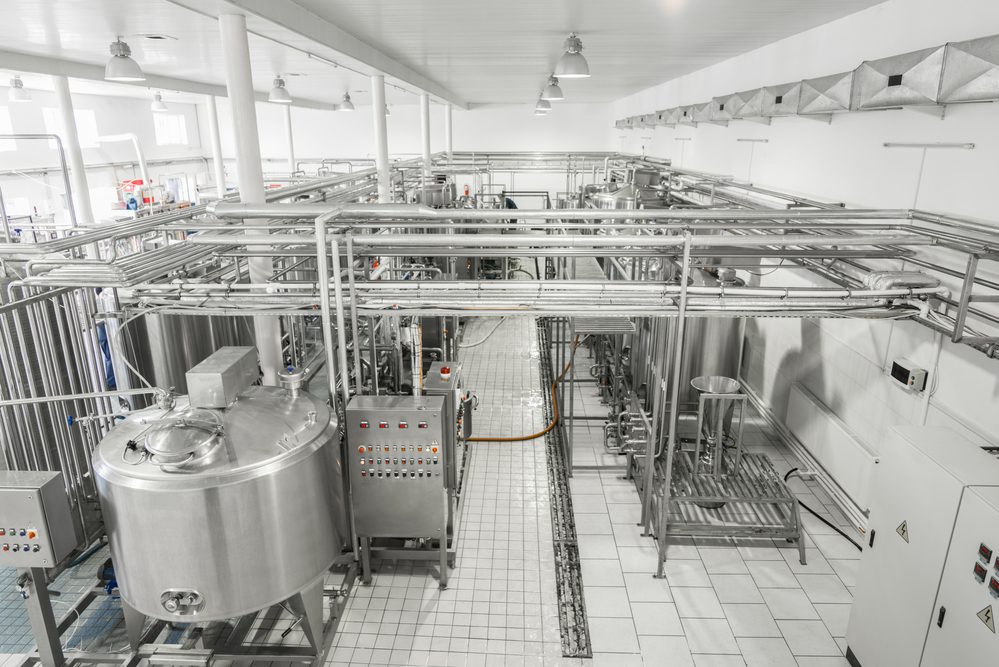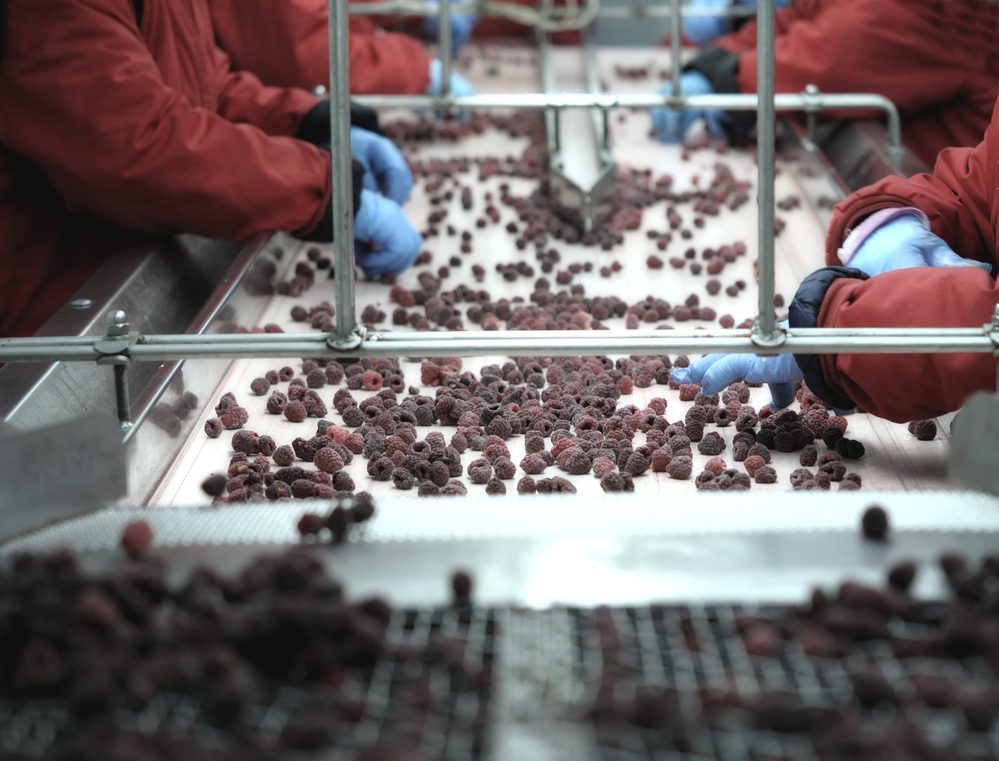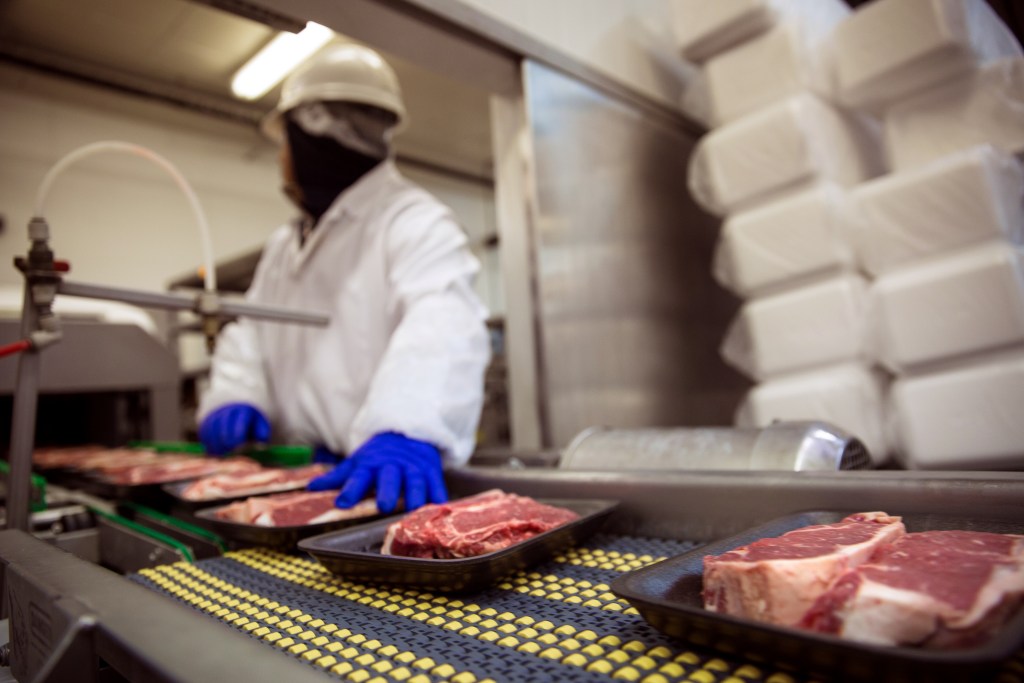Did you know that bacteria is the leading cause of foodborne illnesses across the world?
For the United States, that means over 48 million cases of illness and over 100,000 hospitalizations each year, not to mention billions in lost revenue for the food industry.
The best way to avoid contaminated food products and protect your patrons is to identify where bacteria like to hide and prevent it from building up.
In this article and video, we will cover just that.
Two Most Common Hiding Places for Bacteria in Food Processing Plants
Bacteria, pathogens, and other microorganisms hold the power to contaminate a product, shut down a production line, cause mass recalls, significantly damage profits, and tarnish a brand’s name.
In order to avoid the above, it’s important to know where bacteria likes to hide.
Here are the two most common places that bacteria hide and thrive in food processing plants:
- Floor Drains and Other Wet Areas
- Cracks and Crevices in Equipment and Flooring
Floor Drains and Other Wet Areas
It should come as no surprise that wet areas, like floor drains, are a hotspot for bacteria in food production environments.
It makes sense that a damp, humid area might attract bacteria, but let’s break down what exactly makes floor drains a hotspot.
Floor drains serve an important and necessary function in every facility. They allow cleaning crews to efficiently promote the flow of liquids and other debris away from sanitary areas.
While floor drains are an effective way of keeping clean areas clean, it also means that bacteria, germs, and other surface-borne pathogens are all flowing into the same dark, damp, and humid place.
It’s in an environment like this that bacteria are able to breed and thrive. That’s why it’s important for cleaning crews to pay special attention when cleaning or unclogging dirty floor drains.

But, they have to be careful to avoid cross contamination and spreading bacteria on food and to clean areas. Because there can be a large buildup of bacteria in and around floor drains, workers who walk by it, or cleaners who clean it out, can track the bacteria around the facility.
In order to avoid spreading the bacteria, the tools and equipment that were used should be thoroughly cleaned and disinfected after every cleaning. In a best case scenario, these tools should be reserved for only this area of the facility.
After cleaning the floor drains, the focus should be on other wet areas, like hydrocoolers and drip pans.
While these areas may not be as much of a priority as the floor drains are, they are still a breeding ground for pathogens. Remember, bacteria and pathogens like to develop anywhere that’s damp and humid.
Even in the smallest corners, bacteria are able to thrive.
Cracks and Crevices in Equipment and Flooring
Floor drains aren’t the only breeding ground you should worry about.
Some examples of cracks and crevices in equipment and flooring:
- Concrete flooring
- Epoxy flooring
- Grout lines
- Lap joints
- Caulking (in or above the product zone)
- Sleeved assemblies longer than 1-1/2 inches
Cracks, crevices, and other small hiding spots also tend to have conditions that promote the growth of bacteria on food processing equipment.

Because these areas can be difficult to reach, they’re typically difficult to clean as well, leading to bacterial buildups. As a result, there are dozens of standards for what materials can be used to make food processing equipment, and how the equipment should be designed.
The equipment material needs to be non-absorbent, smooth, erosion resistant, and durable, while machinery has to be designed in such a way that every nook and cranny is accessible for cleaning and sanitation procedures.
For example, if a piece of equipment has two flat stainless steel plates stitch welded together, then the surface area between those two plates is inaccessible for cleaning and sanitization. As a result, bacteria will grow and develop as it never gets cleaned.
Openings like seams, small gaps, and lap joints attract microorganisms. On top of that, it is typically difficult for standard cleaning equipment, like a brush or rag, to adequately access these small openings. Without proper access, it’s impossible to clean and sanitize.
The same goes for cracks and crevices in flooring.
Cracks allow moisture to build up undetected, leading to the production of bacteria. Bacteria buildup on the floor is noteworthy because it can easily be tracked throughout a food processing plant by unknowing employees.
The best way to clean these hard-to-reach crevices as you identify them is to use a clean rag soaked in your choice of chemical. Don’t forget to consult your chemical specialist about which chemical is right for your situation, especially if you’re dealing with biofilm.
Pro Tip: What is biofilm? Biofilm is a collection of bacteria and other microorganisms that form a chemically resistant, protective barrier.
Avoid using a traditional mop and bucket, as this tends to spread the bacteria around instead of removing it.
Now that you know where bacteria likes to hide, let’s see what can be done to combat it.
How can Food Handlers Reduce Bacteria in Food Processing Plants?
There are several actions that food handlers can take.
The first one is to begin regular treatments for bacteria and pathogen buildup. These treatments use chemical sanitizers and antimicrobial agents to combat harmful bacteria. It’s important to make sure that you’re using the right chemicals for the job.
Pro Tip: Food areas need to be sanitized so that food doesn’t become infected with bacteria. When doing this, it’s important to use a food safe sanitizer, otherwise the chemicals you use can contaminate the food.
If, for example, the bacteria has developed into biofilm, standard cleaning products may not be effective enough. It’s always best to hire an outside professional for regularly scheduled treatments, as they’ll know where to target the treatment and which chemicals will be most effective for you.
Another effective measure is to follow the 10 Principles of Sanitary Design:
- Cleanable to a Microbiological Level
- Made of Compatible Materials
- Accessible for Inspection, Maintenance, Cleaning and Sanitation
- No Product or Liquid Collection
- Hollow Areas Should be Hermetically Sealed
- No Niches
- Sanitary Operational Performance
- Hygienic Design of Maintenance Enclosures
- Hygienic Compatibility With Other Plant Systems
- Validated Cleaning and Sanitizing Protocols
These standards were set by the Foundation for Meat and Poultry Research and Education (FMPRE). They cover a range of principles, including which materials should be used for the equipment, appropriate use guidelines for HVAC systems, and protocols surrounding proper employee hygiene.
Final Thoughts
Bacteria in food production is a very serious issue. If a food product becomes contaminated with bacteria it can cause the production line to shut down while you have to deal with recalls of that product. This can have a significant impact on a business’ profits, all the while affecting your brand’s name and reputation.
So, during the next regularly scheduled cleaning, you can identify bacterial buildups by checking floor drains, pipes, and other wet areas, along with any cracks and crevices you notice in the floor or equipment. Then, you can begin treating these areas.
Moving forward, make sure all equipment in your facility follows the standards set by the FMPRE so there are less opportunities for bacterial growth.
If you’re not sure how to get started, consider reaching out to an Imperial Dade location near you to get in touch with one of our chemical experts.
They’ll work with you to provide a free onsite or online consultation so that they can suggest the best first step for your operation.
If you already know your first steps, ask them about our line of chemical cleaning products. We have a wide selection of cleaning and sanitizing agents that will help eliminate any bacterial buildups in your food processing plant.
